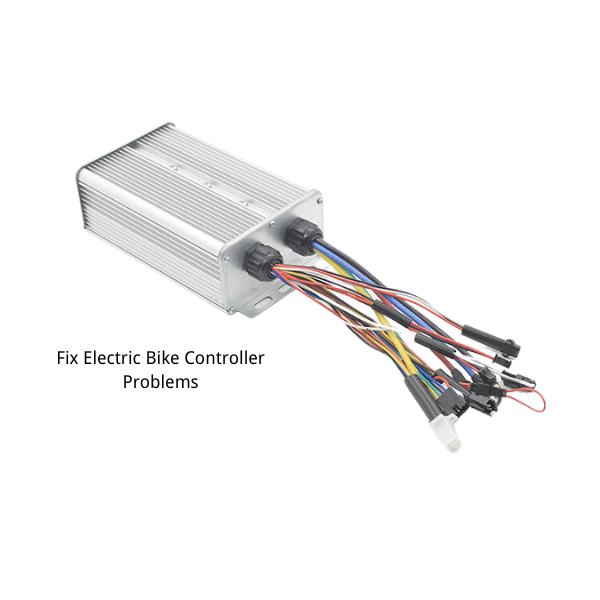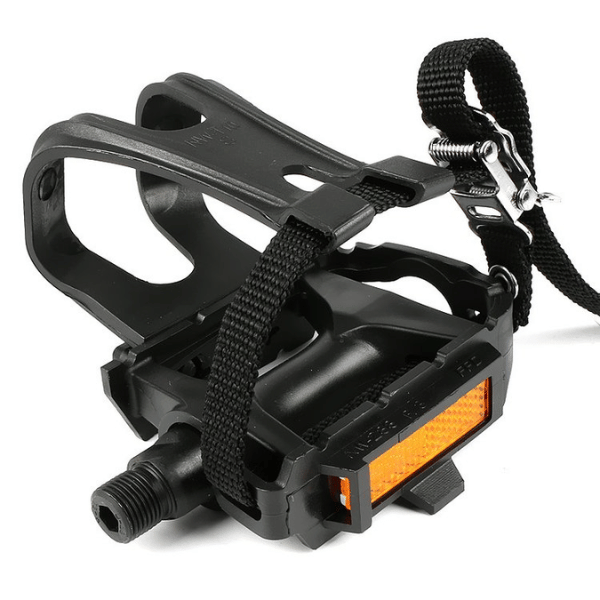The Ultimate Guide to Troubleshooting Common Electric Bike Problems
A bike that uses electricity is preferred for individuals who are mindful of the environment and those who love bikes. But what needs to be known is that, like any other mechanical item, electric bikes may have problems as one continues using them. In this ultimate guide, we will explore the world of fixing common electric bicycle hitches by giving you invaluable tips to enable your e-bike to run smoothly and more effectively. This comprehensive guide is designed to help you address ordinary e-bike challenges with the correct skills and knowledge, from diagnosing battery problems to correcting motor issues.
How to Fix Electric Bike Controller Problems?
Troubleshooting an electric bike controller starts with understanding its fundamental roles in power distribution. Here are steps for effectively detecting common controller issues.

Check All Wiring Connections
Firstly, make sure all the wires going in or out of the controller are well connected and in good condition. Look for signs of degradation, rust, or loose connections on those connectors. Bad wiring can cause sporadic power supply, leading to poor bike performance during operation. Important connections to check include those joining the controller with the battery, motor, and display unit. Seated correctly and moisture-free connectors ensure reliability.
Verify Controller Functionality with Multimeter
For checking whether there are any faults in your controller, this tool can be very useful when diagnosing it. To confirm that it falls within the recommended range, measure your battery's voltage using a multimeter. Measure nextly output voltage from controller towards motor.In case the expected readings do not match the actual ones, that could indicate a faulting controller system. The tests must be carried out to ensure safety first – turn off the power switch.
Talk to a Professional Bike Mechanic
Consult a professional bike mechanic if preliminary troubleshooting does not resolve the issue. A mechanic specialized in e-bikes possesses the appropriate tools and expertise required to accurately identify and resolve problems associated with controllers. Explain fully all symptoms and any other troubleshooting done so far to hasten the resolution process.
Tackling Electrical Bike Brake Problems
Issues with electric bike brakes can be a serious problem for ride safety and performance. This section explains how to diagnose and troubleshoot common brake problems to get the best results from your brakes.

Evaluating Brake Pads for Wear
Stopping relies on good brake pads. Make sure that they wear evenly, are not thinner than 1.5mm, or have no sign of damage. Replace the worn-down ones or those damaged to maintain the effectiveness of braking and general safety. Regularly checking the condition of the brake pads is always advised to avoid costly repairs and ensure rider safety.
Adjusting Brake Lever Tension
Right tension on the brake lever is important in responsive braking. When the lever is either too tight or too loose, adjust it by turning the tension screw present on the lever assembly. The desired tension should allow you to hold a firm grip without feeling spongy or too hard thus facilitating effective braking response within a short time.
Assessing Brake Sensor Performance
Brake sensors are crucial elements in e-bike safety as they shut off the motor when brakes are applied. Check if it still functions right by using the braking handle while observing what reaction occurs regarding the motor’s movement; there must be an immediate stoppage of its operation. Inconsistent / delayed response signals are signals the sensor must address for safe riding conditions.
These Are Steps To Take To Fix An Electric Bike Battery That Does Not Charge
Addressing electric bike battery charging issues is important to maintaining the bike's performance and reliability. This section will guide you through identifying and correcting charging problems to ensure your e-bike is always ready for your next ride.

Check Battery Connections are Fastened Well
Battery connections that are either loosened or corroded can obstruct charging. The first step is to disconnect them and visually inspect all connections for dirtiness and soundness. Then, reconnect, ensuring each connection is tight and secure. Use a solution of baking soda mixed with water to clean corrosion, then rinse with clean water before drying before reconnection.
Test Battery Voltage Using A Voltmeter
A voltmeter can be used to give an idea about battery health and its ability to charge. Set the voltmeter at DC voltage. Connect the terminals of the voltmeter to the battery; 42V should be shown by having a 36-volt fully charged e-bike battery (54V for a 48V one). If readings fall significantly below these values, it may suggest a problem or deep discharge condition that requires professional attention.
Charge Battery Properly
There are suitable ways of charging batteries that can prolong their life span. Only use the charger with your e-bike, ensuring it matches your battery’s voltage and type. Attach charger to battery first before connecting main outlet. Do not overcharge, but let it fill up completely; at this point, most systems have an indicator showing that they are full, such as the device light turning green when done recharging. Sometimes, it may be better not run down the battery fully until you recharge but just intermittently topping it up moderately.
Electric Bike Motor Trouble Diagnosis
Motor issues can affect the performance of electric bike motors. This section will take you through the steps needed to identify and address common motor problems for optimal function.

Inspecting the Motor Inhibitor Switch
From a braking perspective, an e-bike safety feature that prevents further power from being supplied to the motor is referred to as the motor inhibitor switch. Test it by checking all connections are tight and intact, then apply brake lever; if there is no cut out on the engine, perhaps the switch circuitry or connection is faulty. Use an ohmmeter or multimeter to check whether the switch has continuity, with the open position indicating that it needs repair or replacement due to malfunction.
Examining Rear Hub Motor for Malfunctions
While serving a major role in propulsion, rear hub motors could have malfunctioned. Start with looking at external damage or any loose cable connections visually. Listen for unusual sounds while operating it, which may signal internal damages or dirt inside it. With a multimeter, you can measure the electrical resistance of a motor; significant variation from normal indicates internal faults. Make sure that wheel turns freely by hand to rule out mechanical blockages.
Engaging Electric Bike Mechanic
If initial diagnosis has been inconclusive or you do not have expertise in carrying out repairs, seek help from electronic bicycle mechanic immediately. They will ask questions about what problem led them here and various tests already done in order to find solution easily. Specialists may employ sophisticated diagnostic procedures such as controller testing and software analyses, enabling them to better understand where exactly a problem occurs until they fix it.
Pedal Assist Faults and Rectifications
For instance, Pedal Assist Systems (PAS) magnify e-bike efficacy by proportioning motor force to pedaling effort. Thus, understanding and resolving issues with these systems ensures optimal cycling experiences.

Calibration of the Pedal Assist System
To calibrate the PAS will enable accurate assistance levels tied to rider input. Start off by resetting the system using the settings menu on your e-bike’s display unit. Ensure that the sensor is correctly positioned in relation to the magnets on the crank by checking its alignment. Adjust pedal assist settings per manufacturer guidelines, which generally entail selecting a desired level of assistance through any onboard controller.
Pedal Sensor Troubleshooting
This misalignment or damaged pedal sensor is a common cause of malfunction in the Pedal Assist System( PAS). First, check the sensor's alignment; it should be near but not touching any magnet around this crankshaft. Clean up any debris that obstructs its functioning and increase its sensitivity if none occurs. If nothing happens, use a multimeter to test for continuity on the sensor; no beep will indicate the need for sensor replacement.
Replacement of Defective Pedal Assist Components
To replace failed pedal assist components, one needs accurate diagnosis methods. Begin testing for faulty components systematically by starting with pedal sensors, followed up by controllers, and then motor connectors at last. Replace components based on diagnostic outcomes.Refer to manufacturer instructions so as to follow component specifications and their modes of installation, thus sustaining compatibility and warranty terms, respectively.
FREQUENTLY ASKED QUESTIONS
Q: What are the most frequent malfunctions of electric bikes?
A: Common problems with electric bicycles include problems with a throttle, battery, charger, electrical components and pedal assist.
Q: How can I troubleshoot common e-bike problems?
A: Your electric bicycle troubleshooting guideline will provide specific troubleshooting steps for common e-bike issues.
Q: What should I do if my electric bike isn't working?
A: When it doesn’t work, you need to check the battery to ensure that it is charged fully and also ascertain any issues with the electrical components.
Q: How important is regular maintenance for an electric bike?
A: It is important that you maintain your e-bike regularly to ensure that it remains in good condition and that its electrical components and battery pack function properly.
Q: What are some tips for maintaining the battery of an electric bike?
A: To maintain your electric bicycle's battery properly, make sure it’s always full, constantly check for signs of wear or damage, and adhere strictly to suggested methods of protecting batteries.
Q: How can I keep my e-bike running smoothly?
A: One way you can ensure that your e-bike runs smoothly all year round is by performing routine maintenance on it such as checking power supply source, addressing regular E-Bike issues among others
Q. When should I consider taking my electric bike to a bike shop?
A. You should think about taking your electronic bicycle to a store when you have continued troubles with your own abilities once again battery or different parts which associate on electricity that you cannot solve without aid from outside parties.


